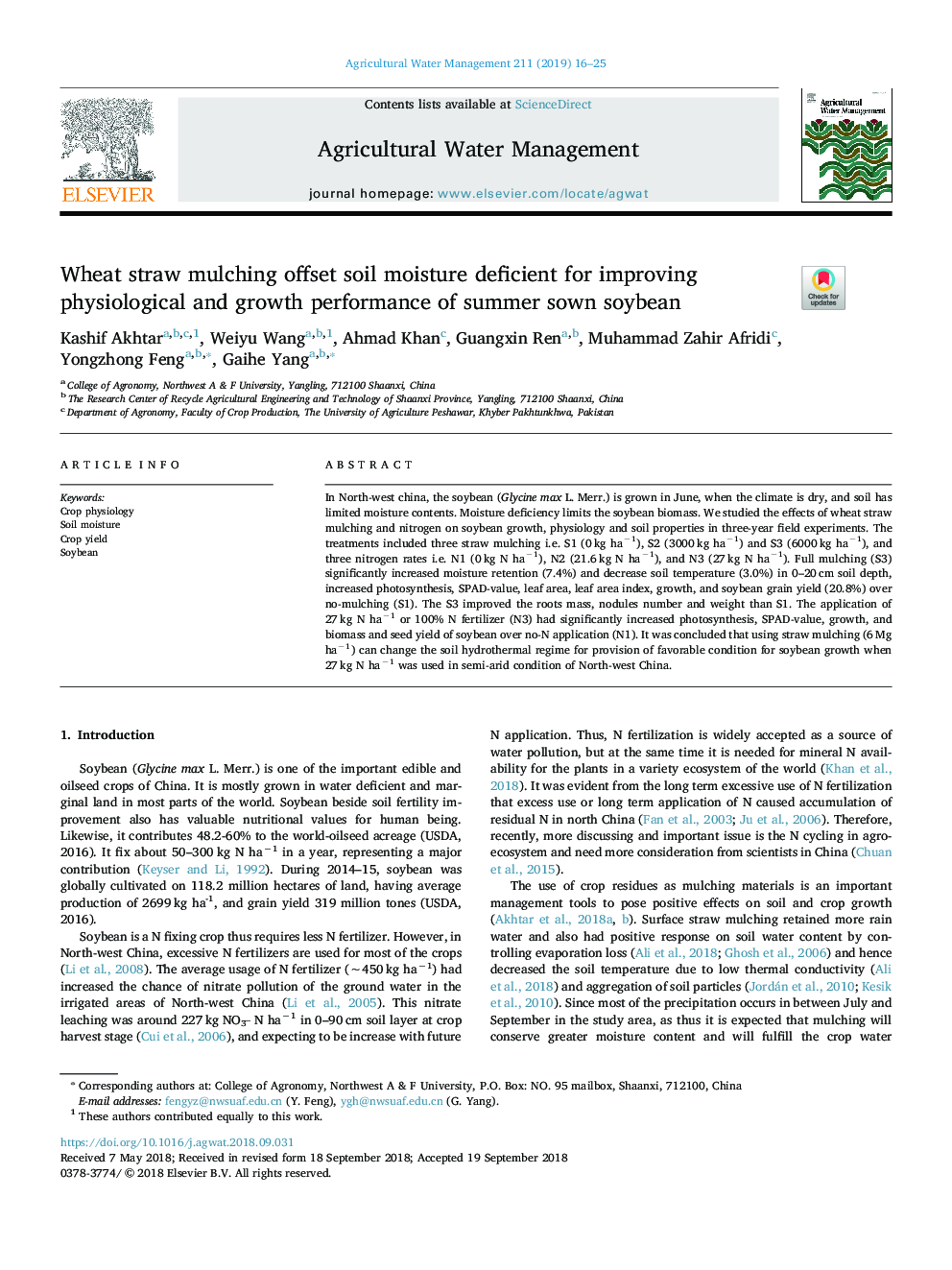| Article ID | Journal | Published Year | Pages | File Type |
|---|---|---|---|---|
| 11021744 | Agricultural Water Management | 2019 | 10 Pages |
Abstract
In North-west china, the soybean (Glycine max L. Merr.) is grown in June, when the climate is dry, and soil has limited moisture contents. Moisture deficiency limits the soybean biomass. We studied the effects of wheat straw mulching and nitrogen on soybean growth, physiology and soil properties in three-year field experiments. The treatments included three straw mulching i.e. S1 (0âkg haâ1), S2 (3000âkg haâ1) and S3 (6000âkg haâ1), and three nitrogen rates i.e. N1 (0âkg N haâ1), N2 (21.6âkg N haâ1), and N3 (27âkg N haâ1). Full mulching (S3) significantly increased moisture retention (7.4%) and decrease soil temperature (3.0%) in 0-20âcm soil depth, increased photosynthesis, SPAD-value, leaf area, leaf area index, growth, and soybean grain yield (20.8%) over no-mulching (S1). The S3 improved the roots mass, nodules number and weight than S1. The application of 27âkg N haâ1 or 100% N fertilizer (N3) had significantly increased photosynthesis, SPAD-value, growth, and biomass and seed yield of soybean over no-N application (N1). It was concluded that using straw mulching (6âMg haâ1) can change the soil hydrothermal regime for provision of favorable condition for soybean growth when 27âkg N haâ1 was used in semi-arid condition of North-west China.
Related Topics
Life Sciences
Agricultural and Biological Sciences
Agronomy and Crop Science
Authors
Kashif Akhtar, Weiyu Wang, Ahmad Khan, Guangxin Ren, Muhammad Zahir Afridi, Yongzhong Feng, Gaihe Yang,
